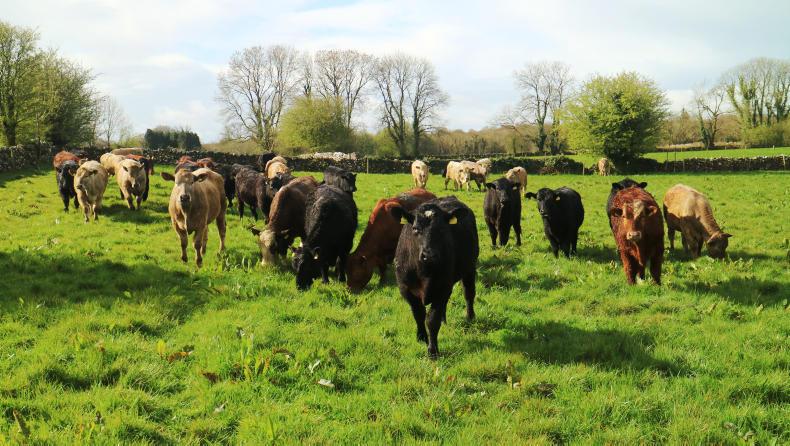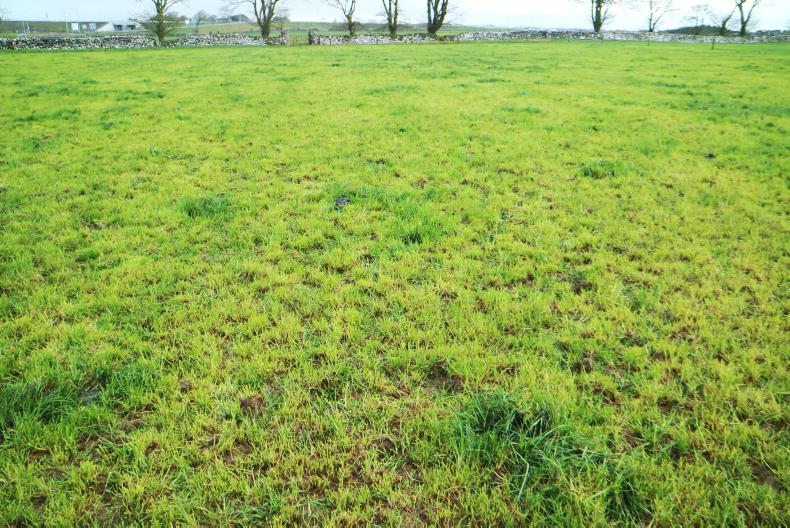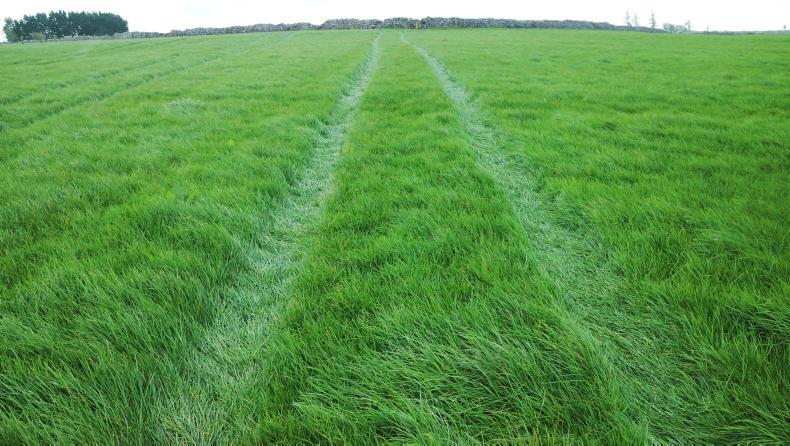Preparations for this year’s breeding season, which is due to commence on 23 April, have stepped up a gear in the last week.
Cows received a mineral bolus and leptospirosis vaccination and have also been tail painted.
While this is taking place ahead of breeding, it will aid recording of breeding activity, which is a useful tool in identifying cows that may be suffering from any issues as the season progresses.
Two Friesian teaser bulls will also be delivered to the farm this week.
Teasers fitted with a chin ball have been a vital heat identification tool in recent years and central to the farm making a switch to 100% AI.

Steers grazing on Tuohy's land block are working their way through some heavy covers.
The bulls cost €2.20/kg, with the final sale price calculated on their weight at movement.
They have been fertility and blood tested as a precaution and have also received a programme of vaccines to guard against disease.
They will also be quarantined on arrival and will not be joined with cows until breeding commences.
Calving progress
Aidan Heavey reports there are just four cows left to calve.
One of these should calve in the next few days, with the other three coming over the next couple of weeks.
The cows are part of a small number bred from week eight to week 10 of breeding in 2018, with over 90% of the herd calving down in the first eight weeks of the calving season.
There are over 100 cows and calves at grass. Michael Fagan of Teagasc reports last week’s growth dipping from 45kg to 50kg DM/ha in the previous week to an average of 25kg DM/ha across the three blocks.
This reduction was forecast, given the reduction in temperatures and cold nights over the last 10 days.

Grass utilisation has varied in recent weeks, but has been pretty good with splitting paddocks helping to get paddocks grazed to the desired level of 3.5cm to 4cm.
Grass supplies are being helped by utilisation remaining pretty good with swards being grazed down to 3.5cm to 4cm.
Growth is lower on the paddocks that have been recently grazed, with these most affected by the drop in temperature and taking longer to recover.

Heavier covers have not been affected as bad by the dip in temperatures with grass providing some insulation to soil temperatures.
Read more
Newford Farm Open Day 2018: Breeding performance
Ten steps to a successful breeding season
Preparations for this year’s breeding season, which is due to commence on 23 April, have stepped up a gear in the last week.
Cows received a mineral bolus and leptospirosis vaccination and have also been tail painted.
While this is taking place ahead of breeding, it will aid recording of breeding activity, which is a useful tool in identifying cows that may be suffering from any issues as the season progresses.
Two Friesian teaser bulls will also be delivered to the farm this week.
Teasers fitted with a chin ball have been a vital heat identification tool in recent years and central to the farm making a switch to 100% AI.

Steers grazing on Tuohy's land block are working their way through some heavy covers.
The bulls cost €2.20/kg, with the final sale price calculated on their weight at movement.
They have been fertility and blood tested as a precaution and have also received a programme of vaccines to guard against disease.
They will also be quarantined on arrival and will not be joined with cows until breeding commences.
Calving progress
Aidan Heavey reports there are just four cows left to calve.
One of these should calve in the next few days, with the other three coming over the next couple of weeks.
The cows are part of a small number bred from week eight to week 10 of breeding in 2018, with over 90% of the herd calving down in the first eight weeks of the calving season.
There are over 100 cows and calves at grass. Michael Fagan of Teagasc reports last week’s growth dipping from 45kg to 50kg DM/ha in the previous week to an average of 25kg DM/ha across the three blocks.
This reduction was forecast, given the reduction in temperatures and cold nights over the last 10 days.

Grass utilisation has varied in recent weeks, but has been pretty good with splitting paddocks helping to get paddocks grazed to the desired level of 3.5cm to 4cm.
Grass supplies are being helped by utilisation remaining pretty good with swards being grazed down to 3.5cm to 4cm.
Growth is lower on the paddocks that have been recently grazed, with these most affected by the drop in temperature and taking longer to recover.

Heavier covers have not been affected as bad by the dip in temperatures with grass providing some insulation to soil temperatures.
Read more
Newford Farm Open Day 2018: Breeding performance
Ten steps to a successful breeding season









 This is a subscriber-only article
This is a subscriber-only article










SHARING OPTIONS: